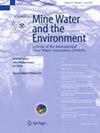Establecimiento de criterios geomórficos de referencia para el diseño de desvíos fluviales en torno a los pozos mineros de Pilbara, Australia Occidental
IF 2.1
4区 环境科学与生态学
Q3 WATER RESOURCES
引用次数: 0
Abstract
Abstract The poor condition of river diversion channels can prevent mining companies from relinquishing their mine to the government after mining has ceased. Many regions lack a locally derived template for integrating appropriate geomorphic and hydraulic conditions from unmodified river channels into river diversion designs to help guide post-mining closure activities. Establishing baseline geomorphic reference criteria for unmodified catchments can guide restoration efforts to allow recovery and stability of the fluvial system. Design-wise, channels should be built so that flow conditions are able to move sediment, but not high enough to accelerate erosion in the channel. We used natural headwater channels to inform a regional guide for geomorphic criteria for artificial channels constructed in the Pilbara, Western Australia. We provide guideline hydraulic criteria for specific channel types, including velocity, stream power, and bed shear stress values for five key channel types: alluvial single thread (≥ cobble) and single thread (sand), bedrock/confined channel sections, island-barform channels, and heavily vegetated channels.为西澳大利亚皮尔巴拉矿坑周围的河流改道设计建立参考地貌标准
摘要导流河道的恶劣条件会阻碍矿业公司在停止开采后将其矿山让渡给政府。许多区域缺乏当地衍生的模板,将未经修改的河道的适当地貌和水力条件纳入河流改道设计,以帮助指导采矿关闭后的活动。为未修改的集水区建立基线地貌参考标准可以指导恢复工作,使河流系统得以恢复和稳定。在设计上,河道的建造应该使水流条件能够移动泥沙,但又不能高到足以加速河道的侵蚀。我们使用天然的源头河道,为西澳大利亚皮尔巴拉地区建造的人工河道的地貌标准提供区域指南。我们为特定的河道类型提供了指导性的水力标准,包括五种关键河道类型的流速、水流功率和河床剪应力值:冲积单螺纹(≥鹅卵石)和单螺纹(砂)、基岩/受限河道段、岛状河道和植被茂密的河道。
本文章由计算机程序翻译,如有差异,请以英文原文为准。
求助全文
约1分钟内获得全文
求助全文
来源期刊

Mine Water and the Environment
WATER RESOURCES-
CiteScore
5.00
自引率
14.30%
发文量
62
审稿时长
3 months
期刊介绍:
Mine Water and the Environment welcomes original contributions that address either technical questions or practical issues related to the evaluation, prediction, prevention, or control of water problems at mining operations or their impact on the environment. The journal and its audience is interdisciplinary. Manuscripts should convey new technical information and be of potential interest to researchers and/or practitioners in this field. Laboratory and field experiments, modelling efforts, studies of relevant field sites, technical evaluations of new technology, and engineering applications are all appropriate.
 求助内容:
求助内容: 应助结果提醒方式:
应助结果提醒方式:


